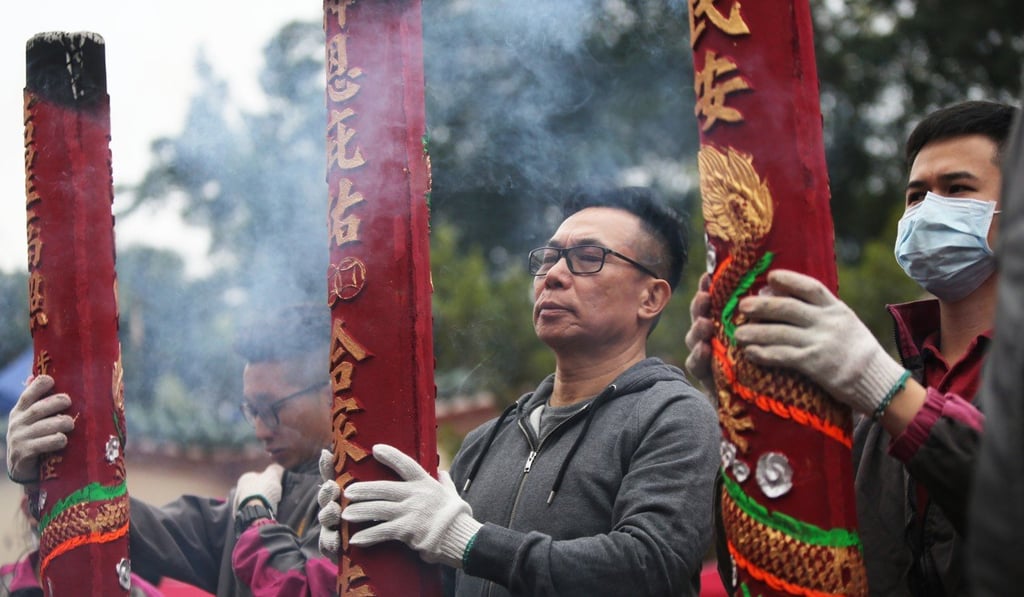Mixed messages for Year of the Dog, including switch of fortune sticks at Hong Kong Che Kung Temple
The words were written on lucky stick number 21, a neutral one, drawn at the Taoist ceremony held on the second day of the Lunar New Year

Hong Kong can expect a thriving outlook for the Year of the Dog, but the city has to be wary of economic risks, according to a message received during a Lunar New Year ritual at the Che Kung Temple in Sha Tin on Saturday – despite a mix-up of fortune sticks.
The words were written on lucky stick number 21, a neutral one, drawn at the Taoist ceremony held on the second day of the Lunar New Year.
The stick is chosen from a container filled with 96 fortune sticks – 35 of which are good, 44 neutral and 17 considered bad.

Written as a poem in Chinese, this year’s offering, roughly translated, read: “At a plough with long history, the ancestors’ works had been accumulated. People should keep in mind that an inch of land is an inch of gold, no matter more or less.”
The message also said: “Family would be thriving yet people cannot succeed in earning as much as they wish.”